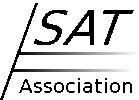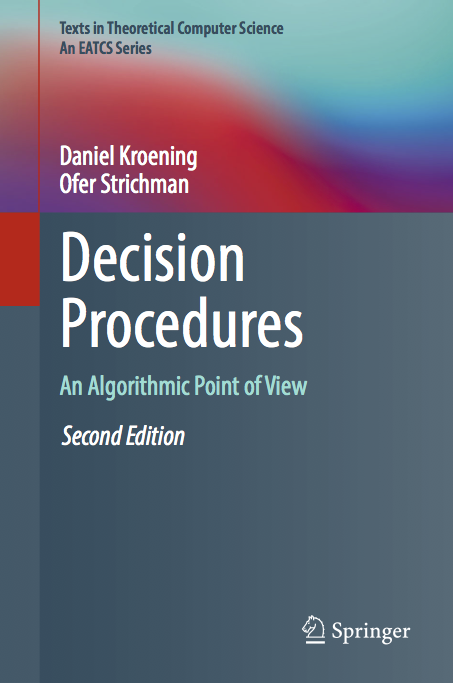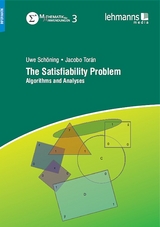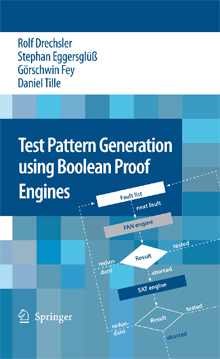SAT 2020 Call for Papers
The International Conference on Theory and Applications of Satisfiability Testing (SAT) is the premier annual meeting for researchers focusing on the theory and applications of the propositional satisfiability problem, broadly construed. In addition to plain propositional satisfiability, it also includes Boolean optimization (such as MaxSAT and Pseudo-Boolean (PB) constraints), Quantified Boolean Formulas (QBF), Satisfiability Modulo Theories (SMT), and Constraint Programming (CP) for problems with clear connections to Boolean-level reasoning.
Scope
SAT 2020 welcomes scientific contributions addressing different aspects of the satisfiability problem, interpreted in a broad sense. Domains include MaxSAT and Pseudo-Boolean (PB) constraints, Quantified Boolean Formulae (QBF), Satisfiability Modulo Theories (SMT), as well as Constraint Satisfaction Problems (CSP). Topics include, but are not restricted to:
- Theoretical advances (including algorithms, proof complexity, parameterized complexity, and other complexity issues);
- Practical search algorithms;
- Knowledge compilation;
- Implementation-level details of SAT solving tools and SAT-based systems;
- Problem encodings and reformulations;
- Applications (including both novel applications domains and improvements to existing approaches);
- Case studies and reports on insightful findings based on rigorous experimentation.
Out of Scope
Papers claiming to resolve a major long-standing open theoretical question in Mathematics or Computer Science (such as those for which a Millennium Prize is offered), are outside the scope of the conference because there is insufficient time in the schedule to referee such papers; instead, such papers should be submitted to an appropriate technical journal.
Paper Categories
Submissions to SAT 2020 are solicited in three paper categories, describing original contributions.
- Long papers (9 to 15 pages, excluding references)
- Short papers (up to 8 pages, excluding references)
- Tool papers (up to 6 pages, excluding references)
Long and short papers should contain original research, with sufficient detail to assess the merits and relevance of the contribution. For papers reporting experimental results, authors are strongly encouraged to make their data and implementations available with their submission.
Submissions on applications and cases studies are especially welcome. Such papers should describe details, weaknesses and strengths of the considered approaches in sufficient depth, but they are not expected to introduce novel solving approaches.
Tool papers must obey to specific content criteria. A tool paper should describe the implemented tool and its novel features. Here “tools” are interpreted in a broad sense, including descriptions of implemented solvers, preprocessors, etc., as well as systems that exploit SAT solvers or their extensions for use in interesting problem domains. A demonstration is expected to accompany a tool presentation. Papers describing tools that have already been presented previously are expected to contain significant and clear enhancements to the tool.
Long and short papers will be evaluated with the same quality standards, and are expected to contain a similar contribution per page ratio.
The authors should choose between a long or a short paper depending on the space they need to fully describe their contribution. The classification between long and short papers is mainly a way to balance the workload of the reviewing process among PC members. It also impacts the duration of the presentation of the work during the conference. It is the responsibility of the authors to make sure that their paper is self-contained in the chosen limit of pages. There will be no requalification of the submissions by the PC.
Submissions
Submissions should not be under review elsewhere nor be submitted elsewhere while under review for SAT 2020, and should not consist of previously published material.
Submissions not consistent with the above guidelines may be returned without review.
Besides the paper itself, authors may submit a supplement consisting of one file in the format of a gzipped tarball (.tar.gz or .tgz) or a gzipped file (.gz) or a zip archive (.zip). Authors are encouraged to submit a supplement when it will help reviewers evaluate the paper. Supplements will be treated with the same degree of confidentiality as the paper itself. For example, the supplement might contain detailed proofs, examples, software, detailed experimental data, or other material related to the submission. Individual reviewers may or may not consult the supplementary material; the paper itself should be self-contained.
All papers submissions are done exclusively via EasyChair in Springer’s LaTeX llncs2e style.
One author of each accepted paper is expected to present it at the conference.
Deadlines
- Abstract submission February 22, 2020
- Paper submission February 29, 2020










